|
 |
|
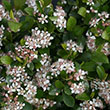
The 'Low Scape Mound' is the smallest aronia variety and is great for container planting and small garden spaces. It will reach 1-2' tall and wide. It produces fragrant, white flowers in the spring and its green foliage turns orange-red in the fall.
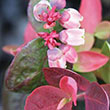
The 'Peach Sorbet' is full of color all year round. Leaf color will morph between pink, orange and green during spring and summer, and will deepen to eggplant-purple in the fall. Hardy from zones 5-10, this variety can keeps its leaves through the winter in most climates. Staying only 1-2' tall and wide, this compact variety is great for patio pots and small garden spaces. 'Peach Sorbet' will produce sweet, tropical flavored berries that ripen in mid-July.
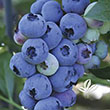
This dwarf variety produced large clusters of white flowers in late-spring that turn into bunches of delicious small berries in the summer. The 'Top Hat' stays 1-2' tall and is great for small garden spaces and patio gardening. This compact, cold hardy variety is self-fertile, but will produce larger yields when planted in multiples.
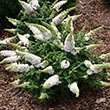
The 'Pugster White' has large, crisp white flowers that cover the plant from summer through fall. It grows 1-2' tall and 2-3' wide, making it a great option for small garden spaces and containers.
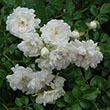
White Drift' has bright-white, fully double blooms. It is compact, reaching only 1-2' tall and 2-3' wide. Great for containers.
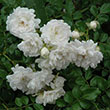
Height: 24 inches
Spread: 3 feet
Sunlight: full sun
Hardiness Zone: 4a
Group/Class: Groundcover Rose
Brand: Drift
Description:
This variety is a compact spreading groundcover rose producing beautiful white double blooms throughout the season; foliage is deep green and provides great contrast; its spreading habit makes it perfect as a full sun groundcover foundation planting
Ornamental Features:
White Drift Rose features showy white flowers with gold eyes at the ends of the branches from mid spring to early fall. The flowers are excellent for cutting. It has dark green deciduous foliage. The oval compound leaves do not develop any appreciable fall color.
Landscape Attributes:
White Drift Rose is a multi-stemmed deciduous shrub with a ground-hugging habit of growth. Its average texture blends into the landscape, but can be balanced by one or two finer or coarser trees or shrubs for an effective composition.
This shrub will require occasional maintenance and upkeep, and is best pruned in late winter once the threat of extreme cold has passed. It is a good choice for attracting bees to your yard. It has no significant negative characteristics.
White Drift Rose is recommended for the following landscape applications:
- Mass Planting
- Border Edging
- General Garden Use
- Groundcover
- Container Planting
Planting & Growing:
White Drift Rose will grow to be about 24 inches tall at maturity, with a spread of 3 feet. It tends to fill out right to the ground and therefore doesn't necessarily require facer plants in front. It grows at a fast rate, and under ideal conditions can be expected to live for approximately 30 years.
This shrub should only be grown in full sunlight. It does best in average to evenly moist conditions, but will not tolerate standing water. It is not particular as to soil type or pH. It is highly tolerant of urban pollution and will even thrive in inner city environments. This particular variety is an interspecific hybrid.
White Drift Rose makes a fine choice for the outdoor landscape, but it is also well-suited for use in outdoor pots and containers. Because of its spreading habit of growth, it is ideally suited for use as a 'spiller' in the 'spiller-thriller-filler' container combination; plant it near the edges where it can spill gracefully over the pot. It is even sizeable enough that it can be grown alone in a suitable container. Note that when grown in a container, it may not perform exactly as indicated on the tag - this is to be expected. Also note that when growing plants in outdoor containers and baskets, they may require more frequent waterings than they would in the yard or garden.